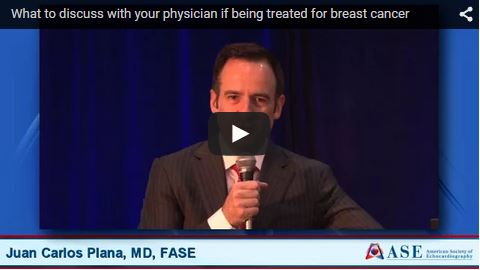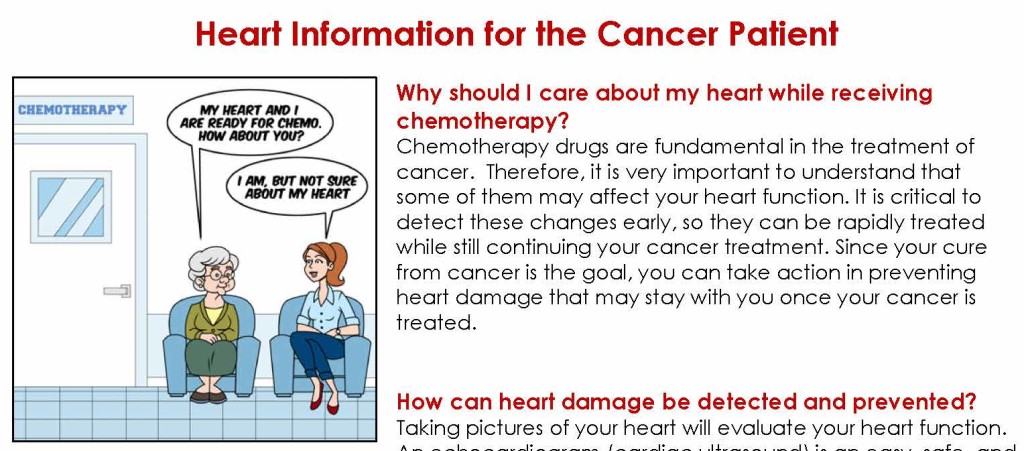Success in the treatment of childhood cancers has increased over the years. However, the treatment of cancer may have longstanding effects. The heart is particularly vulnerable to many cancer treatments such as chemotherapy and radiation. The important anatomic structures of the heart include:
- Heart Muscle
- Coronary Arteries
- Pericardium
- Valves
- Electrical System
Each of these may be negatively affected by cancer treatments such as chemotherapy and radiation.
Download Heart Information for the Cancer Patient – English – Spanish
Breast Cancer
If you are receiving treatment for Breast Cancer, listen to Juan Carlos Plana, MD, FASE as he helps you maintain a healthy heart during treatment.
Watch the video in English or Spanish. 
Chemotherapy
Doxorubicin (Adriamycin) is a common chemotherapeutic agent that is useful for the treatment of many cancers. It is a drug in the class called anthracyclines. Its most serious side effect is damage to the heart muscle. The risk of damage rises with increasing doses of medication. Those individuals who have received more than 400 mg/m2 are at higher risk of weakened heart muscle (cardiomyopathy). Other risk factors for developing heart damage from Adriamycin include chest radiation and treatment at a very young age (less than 4 years old). The damage to the heart muscle sometimes happens at the time of treatment but more commonly, the abnormalities are noted many years after treatment. The heart damage caused by these agents can be seen on an echocardiogram (heart ultrasound). Currently, the heart is monitored during treatment so that if damage is detected, the treatment can be modified to use another medication. However, because heart damage may happen after cancer treatment, life-long follow-up with echocardiograms and check-ups with a health care provider is important. In some cases, a stress echo may be useful to detect milder forms of heart damage. Many treatments are available for individuals who develop heart damage due to cancer treatment. Your health care provider will determine the best treatment for you. In general, the basic treatments include: • Medications: ACE Inhibitors, Diuretics, Digoxin, Beta blockers • Heart transplant or other devices for the most severe cases
Doctors Warn of Heart Risk From Some Breast Cancer Therapies
Radiation
Radiation is an effective treatment for a variety of cancers. However, radiation to the chest even without chemotherapy can lead to heart damage. Most often the heart abnormalities are seen many years after treatment. Damage is due to inflammation and scarring of blood vessels, valves, pericardium (sac surrounding the heart) and heart muscle. Heart damage from radiation has been seen most often in patients treated for Hodgkin’s disease. The specific effects of radiation on the heart include: • Weakening of the heart muscle (cardiomyopathy) • Calcification of the heart valves leading to stenosis (narrowing) or regurgitation (leakage) • Conduction abnormalities (abnormalities of the heart’s electrical system) leading to a slow heart beat • Thickened pericardium/pericardial effusions (scar tissue in the sac around the heart/fluid in the sac surrounding the heart) • Coronary artery disease Because these abnormalities are usually detected many years after treatment, close follow-up with a healthcare provider and echocardiograms is important. If any of these abnormalities are detected, the appropriate treatment will be determined by your health care provider.









